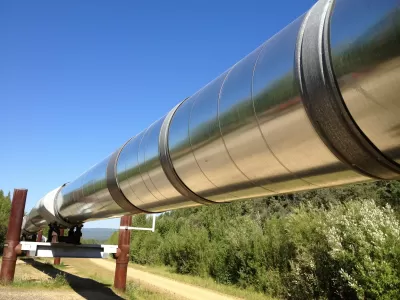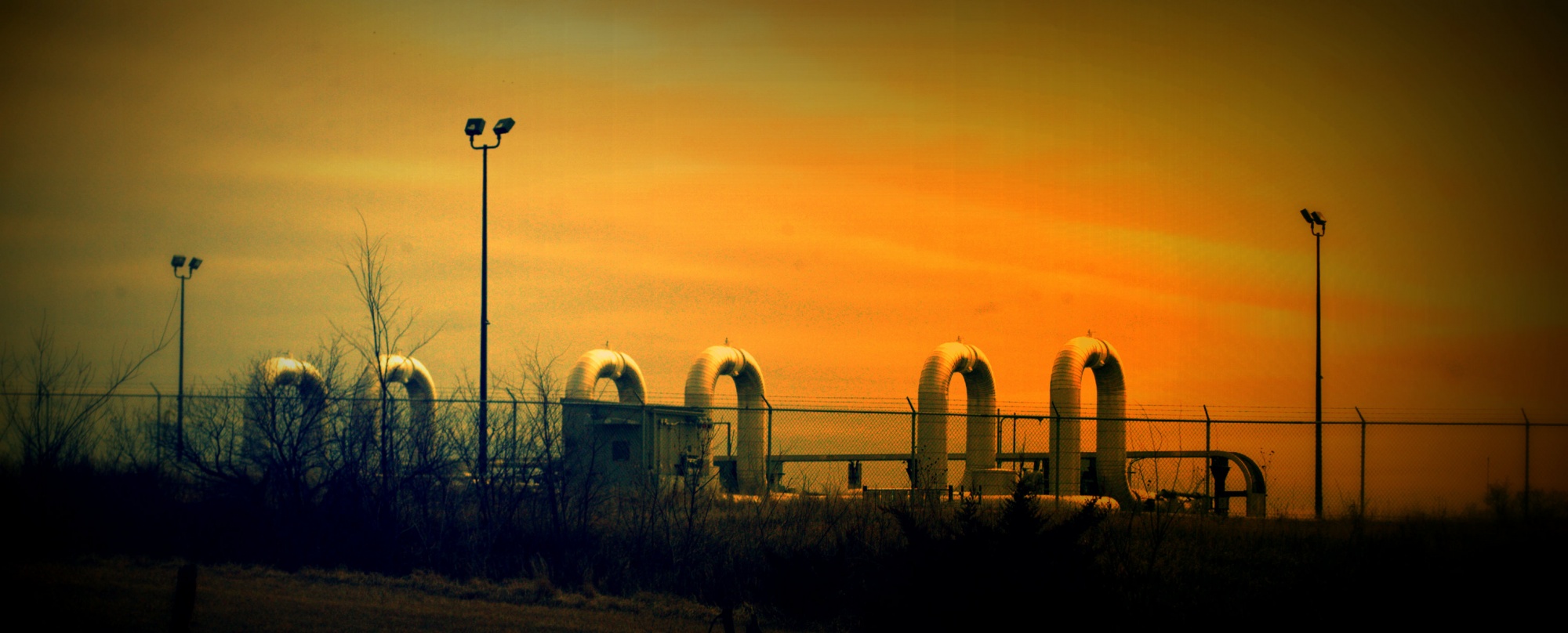Open Access to Anna Osland's Article, "Using Planning to Mitigate Hazards from Hazardous Liquid and Natural Gas Transmission Pipelines." Link here: http://goo.gl/bDYGJg. Osland finds land use planning is overlooked in N.C. pipeline networks.

Resent research in JPER details the role of planners in protecting the public from the risks associated with pipelines (open access until August 15, 2014).
Large-scale hazardous liquid and natural gas transmission pipelines carry many types of hazardous chemicals across the United States. In the United States, there are almost 400,000 miles of transmission pipelines, traversing both wilderness and urban areas. Due to an increasing demand for the products carried in pipelines, additional pipelines are expected to be constructed in the future. One of the most well-known examples of a potential new transmission pipeline is the Keystone XL pipeline. This pipeline will move products from Canada to the Midwest and Gulf of Mexico.
Products carried in pipelines, such as refined and unrefined petroleum products or natural gas, support many industries and parts of the economy. Transmission pipelines have a relatively low accident rate per mile, but hundreds of accidents occur each year. According to the Pipeline and Hazardous Materials
Safety Administration, there were over 200 significant onshore incidents in 2013[1]. A pipeline accident can have severe environmental, human health, and economic consequences for communities.

Trans Canada Keystone Oil Pipeline (shannonpatrick17)
Since pipelines are owned and operated by private companies, local governments may have little knowledge about the exact location of, products carried by, or hazards posed by rupture of a transmission pipeline. Local governments do not have legal status to influence or control the contents or operating pressure of transmission pipelines since these pipelines are regulated under interstate commerce laws. Nonetheless, land use planning plays a key role in reducing the potential for damage to a pipeline and, thus, reducing potential harm to the community from an accidental release of pipeline products. Land use planners can use a variety of tools to keep inappropriate development from encroaching on pipeline hazard zones.
In a recent study published in JPER, Anna Osland (free link until August, 15) conducted surveys of planning directors from communities in North Carolina with transmission pipelines. Using this data, she identified the planning tools communities commonly use to address pipeline hazards. She evaluated the factors associated with use of planning tools to reduce development encroachment on transmission pipelines. The results of this study illustrate the following: (1) communities in North Carolina are using few planning tools to address development near transmission pipelines; and (2) implementation of different types of planning tools (e.g., information tools, regulatory tools) are influenced by unique factors such as involvement of specific stakeholder groups, community commitment to mitigation, capacity, and community context. The study highlights the importance of conversations with stakeholder groups (especially environmental and pipeline industry groups) when considering transmission pipelines.
Planners can utilize the results of this study in several ways. First, planners working in communities with transmission pipelines can access a list of potential planning tools to address transmission pipeline hazards. Second, by identifying factors associated with adoption of specific classes of planning tools, planners can better consider the planning climate needed to successfully promote adoption of specific types of tools.
This paper highlights how land-use planning can keep people and development from encroaching on transmission pipeline hazards. The study illustrates that planners in a few communities in North Carolina address pipeline hazards and provides practices communities can use to further reduce local risks to human health, homeland security, and the environment from transmission pipelines.
SAGE has provided open access to Dr. Osland's article until August 15, 2014.

Maui's Vacation Rental Debate Turns Ugly
Verbal attacks, misinformation campaigns and fistfights plague a high-stakes debate to convert thousands of vacation rentals into long-term housing.

Planetizen Federal Action Tracker
A weekly monitor of how Trump’s orders and actions are impacting planners and planning in America.

Chicago’s Ghost Rails
Just beneath the surface of the modern city lie the remnants of its expansive early 20th-century streetcar system.

Bend, Oregon Zoning Reforms Prioritize Small-Scale Housing
The city altered its zoning code to allow multi-family housing and eliminated parking mandates citywide.

Amtrak Cutting Jobs, Funding to High-Speed Rail
The agency plans to cut 10 percent of its workforce and has confirmed it will not fund new high-speed rail projects.

LA Denies Basic Services to Unhoused Residents
The city has repeatedly failed to respond to requests for trash pickup at encampment sites, and eliminated a program that provided mobile showers and toilets.
Urban Design for Planners 1: Software Tools
This six-course series explores essential urban design concepts using open source software and equips planners with the tools they need to participate fully in the urban design process.
Planning for Universal Design
Learn the tools for implementing Universal Design in planning regulations.
planning NEXT
Appalachian Highlands Housing Partners
Mpact (founded as Rail~Volution)
City of Camden Redevelopment Agency
City of Astoria
City of Portland
City of Laramie





























